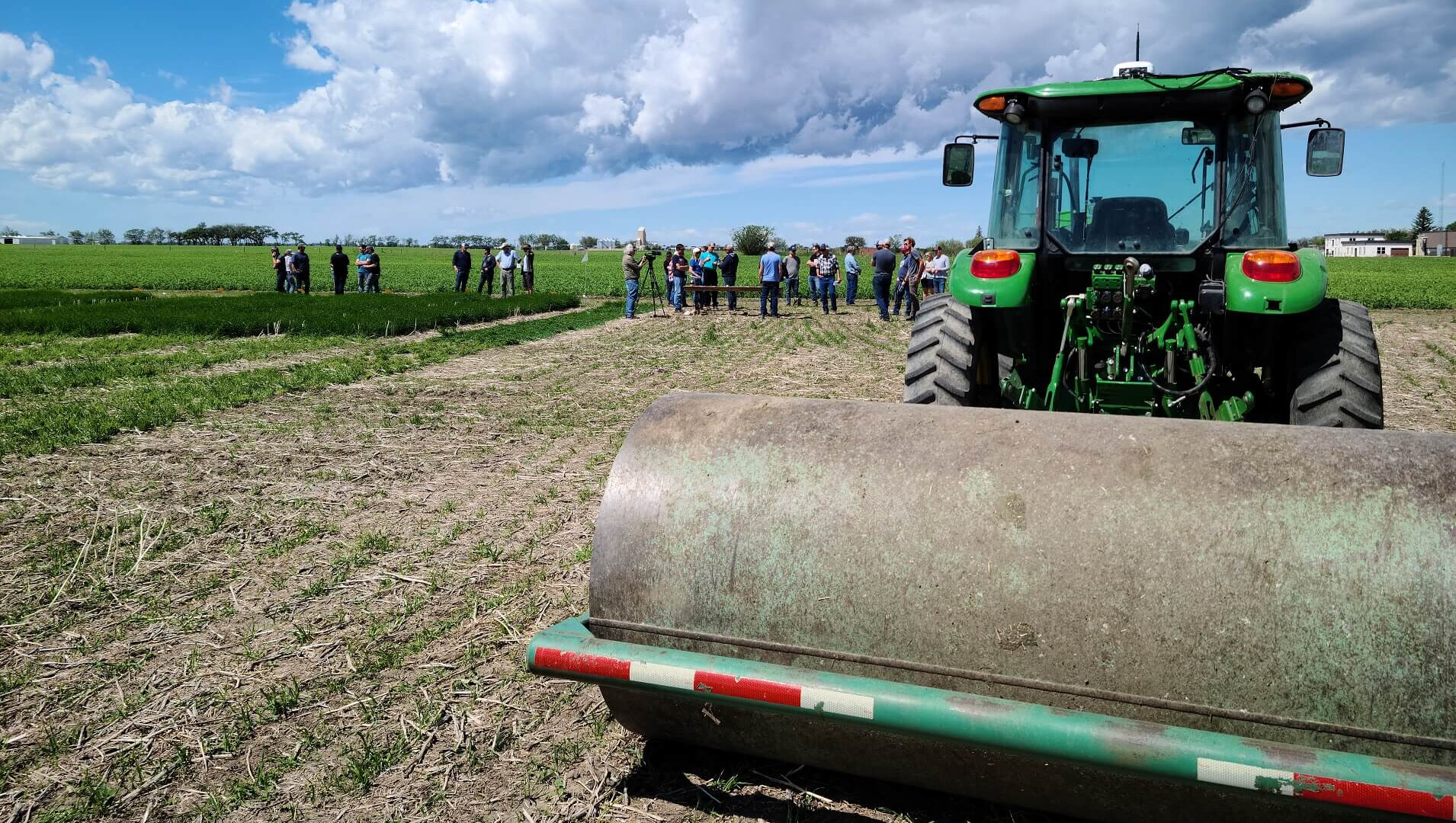The purpose of rolling barley is to push rocks into the soil so that the chopper header does not hit the rocks, avoiding damage to the equipment. However, there seems to be no common time to roll and rolling occurs at many different stages of crop growth. With a final report of the project coming soon, we hope to know when is the best time to roll barley.
This project aimed to find out the effects of rolling at different stages of crop growth. We hope to see what stage of the crop we can comfortably recommend as best for rolling barley. We structured the project to investigate how the timing of rolling barley for silage impacts the yield. We rolled the test plots at different growth stages and hope to make recommendations when to roll barley based on the data collected.
Now, let’s get to that update, shall we. The final data recorded for the trial was grain yield on Aug.16, 2020, marking the successful completion of all data collection. We had no adverse weather events during crop growth. We gathered data on crop growth and rolling times with notes on observations.
One interesting observation was that the crop would lay down for one-to-three days after rolling except for the final rolling at the first node stage where the crop laid down for longer and appeared to be more stressed. The result of the stress at the first node timing did result in noticeable stunting of those plots. We measured the height of each plot one week before harvesting and there appeared to be a difference of ten cm compared to the other plots. Also, we recognized that there was more disease in first node timing plots. We rated the plots on a scale of zero-to-ten (zero equaling no disease at all and ten whole plant infected). The disease rating showed there was indeed more disease in treatment seven plots, there also appeared to be more lower leaf senescence. With the data collected we were able to use ANOVA statistics to determine significant difference between the treatments.
Results show that there was only statistical difference in the height of the plots and the disease rating (using 0.05 significance level). The significance of the height is not surprising and backs up our observations. This leads us to conclude that the physical damage done to the crop did affect the growth of the crop, however it was not enough to overcome the natural variability in the yield. We conducted plant counts after emergence to see if there was a difference in stand due to rolling prior to emergence (trt. 2) and we found no significant difference.
This indicates that rolling shortly after seeding does not impact the emergence of the crop. So, when should you roll your barley? To maximize the yield potential of the crop is it best to roll your barley just after seeding and anytime in the leaf stages of the crop but not once node development begins. Rolling in the node stages does result in damage to the crop that could lead to reduced crop health. Reduced crop health could result in decreased yields.
Even though we did not see decreased yields in our study any activities that decrease overall crop health can lead to greater impacts on your bottom line. More questions arise that could be researched in the future. Does rolling perpendicular to the seed rows lead to more damage? Does seeding rate make a difference? Does turning with the roller lead to more damage? Stay tuned for future developments here.

